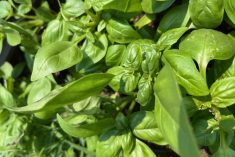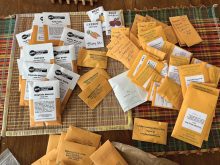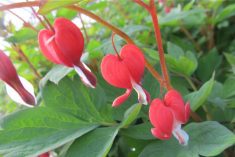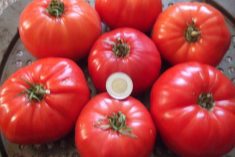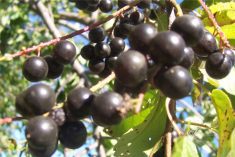Migraine headaches! Ever had one? I’m no expert, but I do know body pain is increasingly a part of everyday life for many people, regardless of age. I’m so glad I’m a gardener. Nature’s pharmacy and self-help remedies from around the world are useful as my preferred guides for relieving pain along with prayer. I have a family doctor too.
Today, we’ll meet two forms of a tender perennial known as feverfew — a medicinal one that may be of benefit to anybody challenged by migraines and other health issues, and another that is an attractive ornamental. If you’re from the Prairies, I’d say ’tis best to treat either or both forms as annuals until hardiness is determined for your area.
We’re all familiar with the extremely popular poinsettia so prominently visible and available for purchase during the Christmas holiday season. Well, wouldn’t you know? There’s an annual garden-grown variety commonly called summer poinsettia that has other generic names too. After seeing some summer poinsettias in an outdoor flower garden at a nursery, I became awestruck by their beauty and have planted them since. Have I got your interest aroused?
Read Also
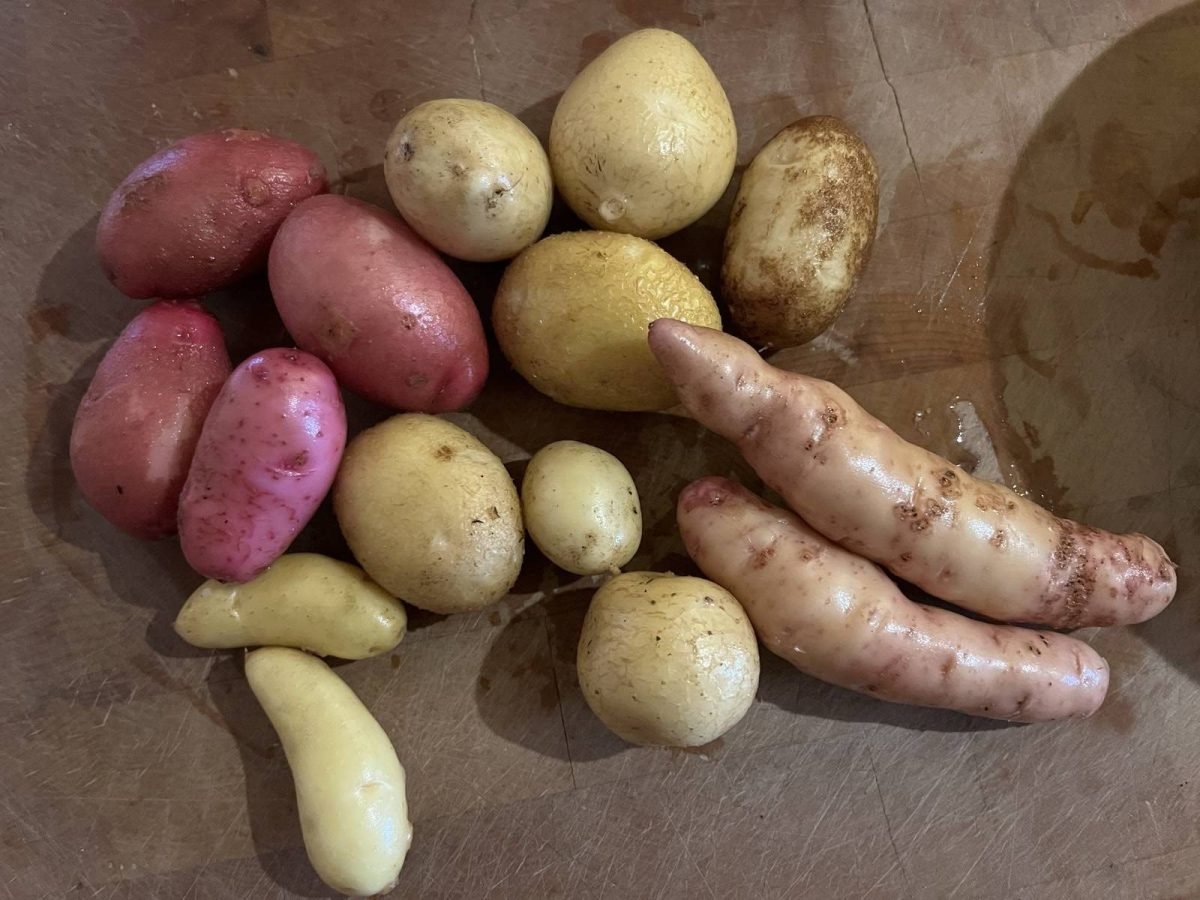
Putting down roots, part 2: Potatoes
Saskatchewan author and chef dee Hobsbawn-Smith offers a retrospective on the potato’s cultural journey from the Americas to Europe and back, and a recipe for butter-basted baby potatoes with rosemary.
More ‘Singing Gardener’ with Ted Meseyton
I hope so, as there’s more than enough to tell Grainews gardeners and visitors about feverfew and summer poinsettia to fill this page and then some. I’m looking forward to hearing the summer trill of the meadowlark and chatter of the house jenny wren too. But right now, each individual joining me can take a comfortable reading spot because here comes my tip o’ the hat and a welcome that’s as wide as the 49th parallel. Thanks for being part of the Grainews family.
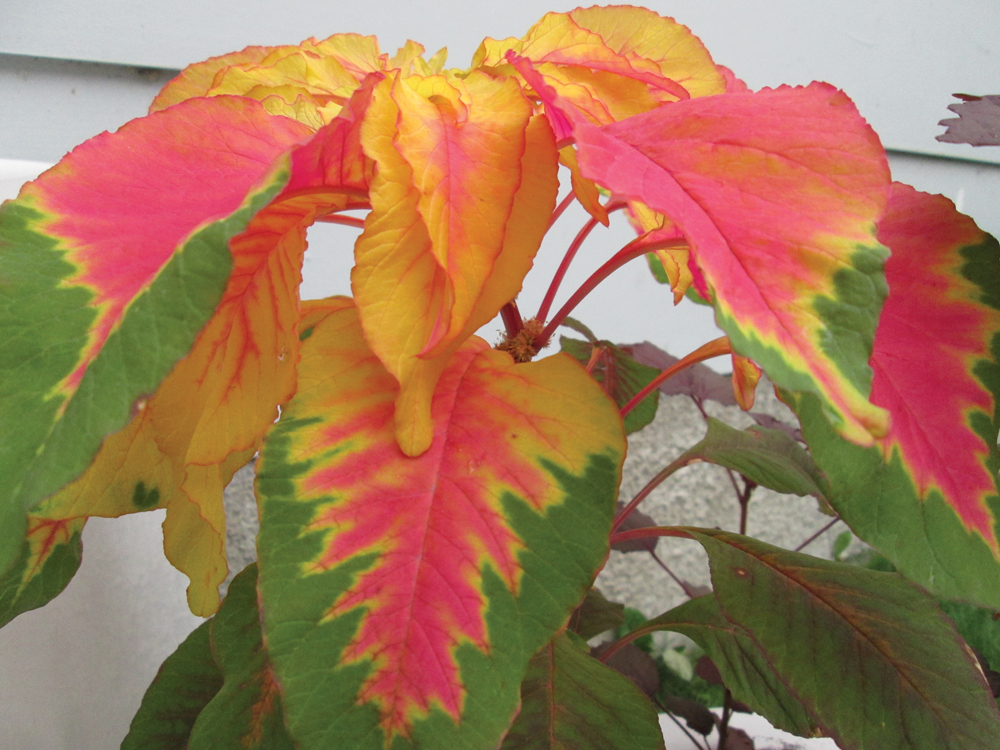
Feverfew
An herb with leathery foliage and aromatic white blossoms with yellow button eyes, feverfew is not so well known among Canadian gardeners. However, it has been traced as a botanical medicine back to the year AD 78. The name feverfew came about because it was commonly used to lower fever. Today, it’s more likely to be prescribed by herbalists as a means to treat headaches. Some good evidence emerged in the mid-1980s from a study at the London Migraine Clinic in England. Researchers wanted to determine scientifically whether feverfew worked as well as people claimed. One group was given capsules of pulverized feverfew leaves and another group was given placebos, but none of the participants knew what they were taking. Feverfew won by a landslide. After the results were published in 1985, feverfew surfaced from an obscure garden herb into prominence in botanical healing. Jennifer Brett, a naturopathic doctor said, “It’s a good alternative for people who have tried everything else for migraines because it usually works.” Even early healers were on to something long before that. Here’s an example. Back in 1597, English herbalist John Gerard recommended placing a poultice of feverfew leaves on an “aching noggin” as a course of treatment for headaches.
Butterbur
Butterbur (Petasites hybridus) is another example of a plant that has been used for years as a natural supplement to treat headaches and other pain. Does it work? When researchers looked at all of the evidence, they found an extract derived from leaves and roots of the butterbur plant not only reduced the number and intensity of headaches but also helped relieve allergy and hay fever symptoms for some people. In addition, butterbur extract in pure powder pill form provided additional benefits, including relief from cramps and a reduction of joint inflammation. Substances in butterbur known as petasines inhibited the production of certain inflammatory messengers. Butterbur also contains essential oils, flavonoids, bitter substances and mucilage. Capsules of butterbur blended with feverfew are also available at some health food stores. This information is not intended to provide medical advice, diagnosis or treatment — consult with your herbalist or health care provider for individual needs.
Growing feverfew
Whether your interest lies in the medicinal herb or simply its decorative qualities, growing feverfew can be a welcome addition to any garden. Don’t be confused by both of its Latin designations, which are Tanacetum parthenium or Chrysanthemum parthenium. Native to central and southern Europe, feverfew is also found in parts of North America. White daisy-like flowers have bright yellow button centres. Some gardeners claim the leaves are citrus scented. Others say both the taste and scent are bitter. Many agree that once established, the feverfew herb can become invasive. Feverfew is actually from a species of chrysanthemum that has been grown in herb and medicinal gardens for centuries, where it was commonly known as featherfew, featherfoil or bachelor buttons. As indicated earlier, feverfew herb was used in the past to treat a variety of pain conditions such as headaches, arthritis and — as the name suggests — to reduce fever or high temperature.

Feverfew herb seeds take about two weeks to germinate. Seedlings started indoors tend to get leggy if overwatered, when light is insufficient or room temperature is too warm. Transplant them when about 7.5 centimetres (three inches) tall, place in a sunny window and water regularly. If you decide to plant feverfew directly in an outdoor garden, sow seeds in early spring while the ground is still cool. Sprinkle the seeds thinly on the soil surface and lightly tamp them down to make sure they make full contact with moist soil. Don’t cover the seeds as they need sunlight to germinate. The main requirement is to choose a sunny spot in the herb garden. Loamy soil is best, but feverfew plants aren’t that fussy. Between July and October, blooms will appear on mature plants, which will resemble a small bush growing up to about 50 centimetres (20 inches) tall. In the fall after frost, cut the tops of feverfew plants back down to ground level. Watch to see if new growth appears the following spring. By the way, feverfew herb self-seeds fairly well, so you might find yourself giving away new feverfew plants within a couple of years.
White Stars feverfew
The White Stars feverfew is the ornamental counterpart to the feverfew herb. Masses of double white flowers will appear on neat, compact plants that grow to about 18 centimetres (seven inches) high. This splendid, all-purpose variety is charming in fresh and dry bouquets, in lapel corsage arrangements or grown in containers. Started medicinal herbal feverfew plants and seeds for White Stars feverfew are available for purchase from Richters, Highway 47, Goodwood, Ont., L0C 1A0, richters.com, 1-800-668-4372.
Summer poinsettia
To close out this column, my next flow of words is directed toward this splendid annual, which reminds me of Dolly Parton’s song “Coat of Many Colours.” You may decide to grow a summer poinsettia (Amaranthus tricolour splendens perfecta) in your outdoor flower garden this year. There several common names for the same plant, including Carnival and Joseph’s Coat, and another botanical name for summer poinsettia to search for in seed catalogues is Amaranthus gangeticus. I recommend sowing seeds indoors first, as they are quite small and can easily roll away from you. They grow into tall green spreading plants that have striking foliage colours of blended fiery red, yellow, bronze and green by mid-summer through to fall. For best performance, place plants in a sheltered, partly sunny to full sun location and water well once transplanted outdoors. By the way, summer poinsettia is resistant to high temperatures if the soil isn’t allowed to dry out and adequate moisture is maintained.





